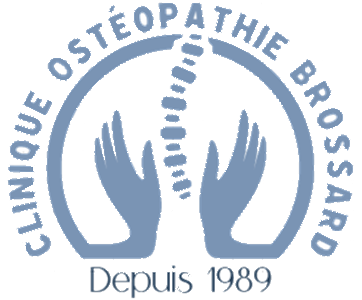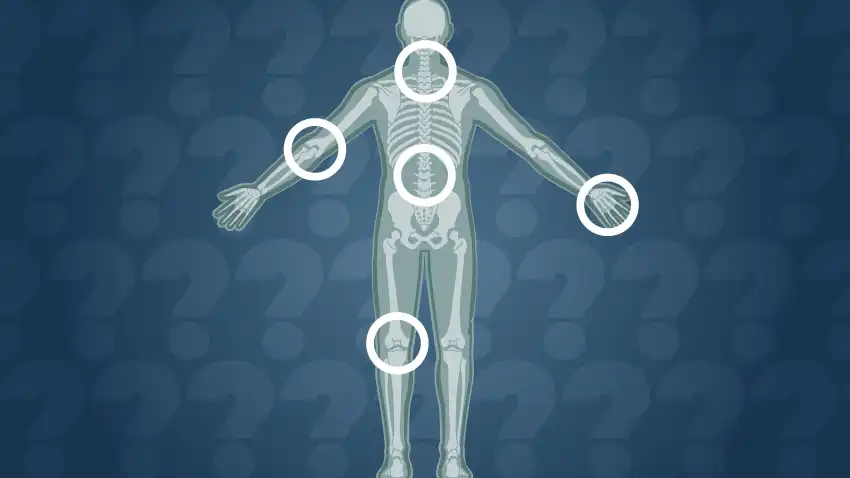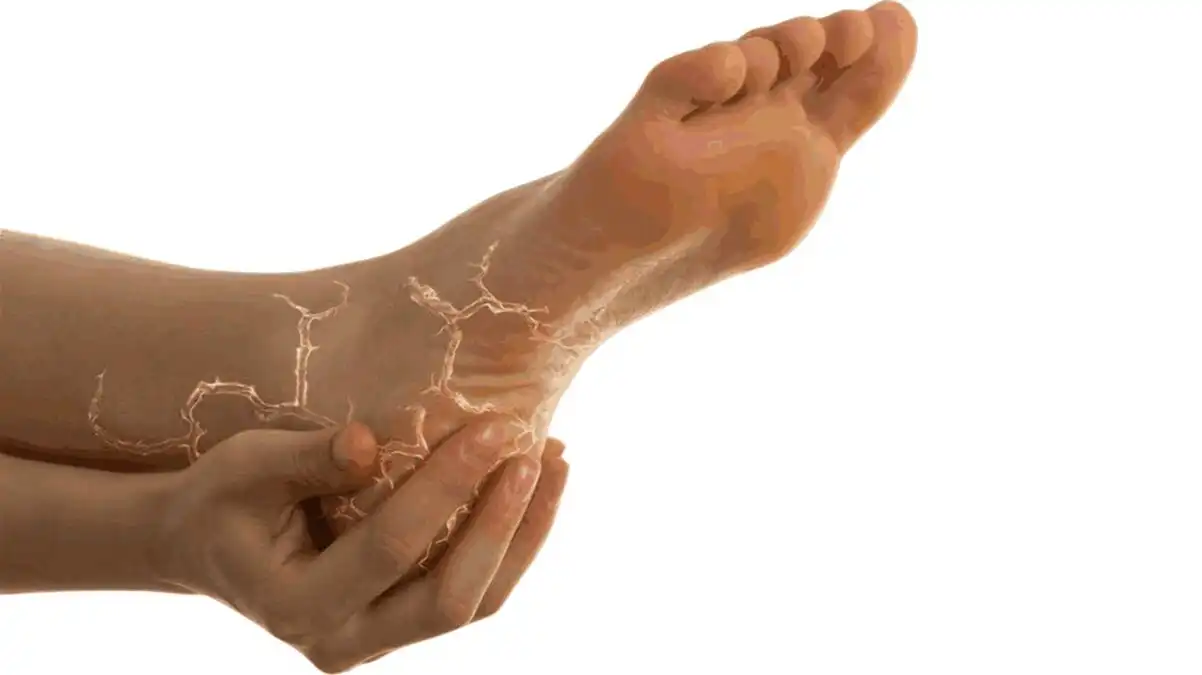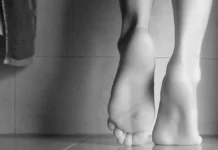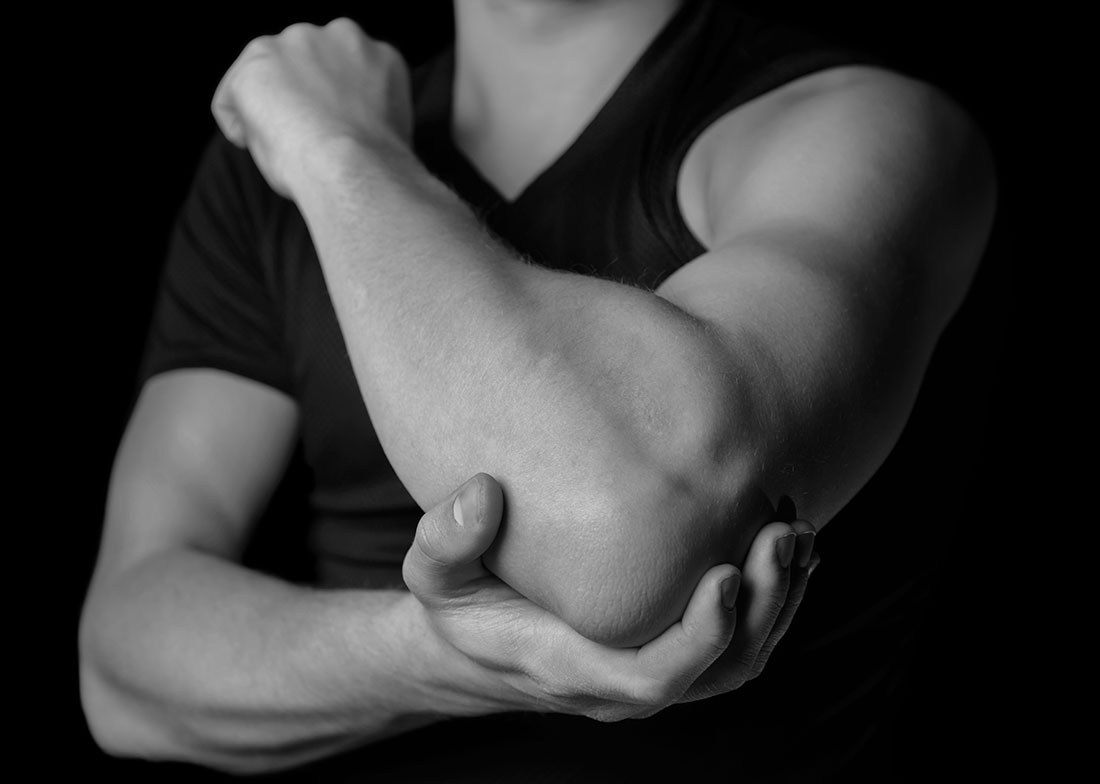Introduction
Joint ankylosis is a debilitating condition characterized by loss of movement in a specific joint. This phenomenon generally results from two main processes: bone fusion and excessive scar tissue formation. These mechanisms lead to increasing stiffness and immobility of the affected joint, having important implications on the quality of life of affected individuals.
Several medical conditions can contribute to the development of joint ankylosis. Among these, rheumatoid arthritis, an autoimmune disease, stands out as a common cause. In rheumatoid arthritis, the immune system attacks the synovial tissues of the joints, triggering chronic inflammation. Over time, this persistent inflammation can lead to damage to cartilage, bone, and eventually fusion of the joint surfaces. Progressive limitation of mobility is a characteristic feature of the progression of rheumatoid arthritis towards joint ankylosis.
Joint trauma, such as severe fractures or dislocations, represents another major source of joint ankylosis. When a joint is severely damaged, the healing process can cause excess scar tissue to form. This tissue, often called fibrosis, has the ability to replace normal tissue in the joint, leading to loss of movement. Orthopedic surgical interventions aimed at stabilizing fractures may also promote the development of joint ankylosis if postoperative rehabilitation is not well managed.
The severity of joint ankylosis can vary depending on the underlying cause and the length of time since symptoms began. In some cases it may occur relatively quickly, while in others it may progress slowly over an extended period of time. The most commonly affected joints include those of the hands, knees, elbows and shoulders.
The consequences of joint ankylosis go beyond simple loss of mobility. Sufferers may experience significant discomfort in their daily lives, affecting simple activities such as dressing, walking or even gripping objects. Psychological quality of life can also be impacted, with feelings of frustration, dependence and sometimes depression.
Treatment for joint ankylosis depends on the underlying cause. In the case of inflammatory diseases such as rheumatoid arthritis, anti-inflammatory medications, biological therapies, and sometimes surgical procedures may be considered. For cases resulting from trauma, early and appropriate management of fractures as well as rehabilitation play a key role in preventing ankylosis.
Thus, joint ankylosis represents a major medical challenge, with significant implications on the quality of life of affected individuals. Understanding the underlying causes, promoting early and personalized treatment approaches, as well as supporting patients in their rehabilitation journey are essential to minimize the effects of this condition and improve joint functionality.
Causes of Joint Ankylosis
Joint ankylosis, often associated with loss of mobility and severe joint stiffness, can result from a variety of causes, including medical conditions, injuries, and surgical procedures. Understanding these causes is crucial for the diagnosis and treatment of this debilitating condition.
First, certain inflammatory diseases such as rheumatoid arthritis and ankylosing spondylitis can lead to joint ankylosis. In these conditions, the immune system attacks the joints, causing chronic inflammation and progressive destruction of cartilage and joint tissue. Over time, this destruction can cause adjacent bones to fuse, limiting the mobility of the affected joint.
Then, serious joint injuries, such as intra-articular fractures or dislocations, can also lead to ankylosis. When adjacent bones are significantly damaged, the body may respond by producing excess scar tissue around the joint to stabilize the injured area. However, this excessive scarring can lead to bone fusion and long-term loss of mobility.
Additionally, surgical procedures such as arthrodesis or joint fusion may deliberately induce ankylosis to treat certain serious joint conditions, such as severe osteoarthritis or joint deformities. During these procedures, surgeons deliberately fuse adjacent bones to stabilize the joint and reduce pain. Although this may relieve symptoms, it usually results in permanent loss of mobility in the treated joint.
Furthermore, certain joint infections, such as tuberculosis or septic arthritis, can also lead to ankylosis. When infectious pathogens invade the joint, they can trigger an inflammatory response that leads to destruction of cartilage and joint tissue. In some cases, this destruction can be so severe that it leads to fusion of adjacent bones.
Finally, genetic and environmental factors may also play a role in the development of joint ankylosis. Some people may be predisposed to an excessive inflammatory response or excessive scarring, which may increase their risk of developing ankylosis if there is an injury or joint disease.
- Rheumatoid arthritis: An autoimmune disease where the immune system attacks the joints, causing inflammation. Rheumatoid arthritis can cause progressive destruction of cartilage and bone, leading to ankylosis.
- Ankylosing spondylitis: A form of inflammatory arthritis primarily affecting the spine. This condition can cause the vertebrae to fuse, limiting the mobility of the spine and adjacent joints.
- Osteoarthritis: Progressive wear and tear of articular cartilage which can result from aging, obesity or excessive use of the joint. When the cartilage is severely damaged, the bones can fuse together, causing ankylosis.
- Joint trauma: Severe injuries to the joints, such as complex joint fractures or repeated dislocations, can cause damage to cartilage and bone, eventually leading to ankylosis.
- Joint infections: Bacterial or viral infections can lead to severe joint inflammation (septic arthritis). If not treated promptly, these infections can damage cartilage and bones, leading to ankylosis.
- Adult Still Syndrome: A rare autoimmune disease that can cause joint inflammation and, in some cases, lead to ankylosis.
- Adhesive capsulitis: A condition where the capsule surrounding a joint, often the shoulder, contracts excessively, gradually limiting mobility and eventually leading to ankylosis.
- Hemophilia: An inherited disease characterized by problems with blood clotting. Frequent bleeding in the joints can cause chronic inflammation and, eventually, ankylosis.
- Autoimmune diseases: Some autoimmune diseases, such as lupus, can cause systemic inflammation that affects the joints, potentially leading to ankylosis.
Symptom of joint ankylosis
Symptoms of joint ankylosis can vary depending on the underlying cause and the location of the affected joint. However, several common symptoms are associated with this condition, which can lead to severe stiffness, loss of mobility, and significant impairment in quality of life.
First of all, joint stiffness is one of the most characteristic symptoms of joint ankylosis. Sufferers may experience intense stiffness in the affected joint, which may be particularly pronounced in the morning or after a prolonged period of rest. This stiffness can make it difficult or impossible for the joint to perform normal movements and can affect daily activities such as getting up in the morning or bending over to pick up objects.
Next, loss of mobility is a major symptom of joint ankylosis. Due to fusion of adjacent bones or excessive scarring of joint tissues, affected individuals may experience a significant decrease in their range of motion in the affected joint. This loss of mobility can be progressive and can ultimately lead to complete immobility of the joint.
Additionally, pain may be present in cases of joint ankylosis, although it may vary in intensity depending on the underlying cause. In some situations, pain may be due to inflammation of surrounding tissues or pressure placed on adjacent nerve structures due to bone fusion. However, in other cases the pain may be less pronounced and may be mainly due to stiffness and loss of mobility.
Additionally, symptoms of joint ankylosis may also include visible joint deformity. In advanced cases, the affected joint may appear swollen, deformed, or abnormally fixed. This deformity may be the result of structural changes in the joint due to fusion of bones or excessive scarring of soft tissues.
Finally, psychological symptoms such as frustration, depression, and anxiety may be associated with joint ankylosis due to its debilitating effects on quality of life and independence. Loss of mobility and inability to carry out daily activities can have a significant impact on the emotional well-being of those affected and often requires additional support.
- Joint Stiffness: A predominant symptom of joint ankylosis is stiffness, especially after prolonged periods of rest. Joints may be difficult to mobilize, which can affect flexibility and range of motion.
- Joint pain: Pain is a common symptom, often associated with inflammation of joint tissues. The pain may be constant or occur with movement of the joint.
- Loss of Mobility: Due to stiffness and fusion of joints, loss of mobility is a characteristic symptom. This can affect the ability to perform normal movements, leading to decreased joint function.
- Joint deformity: In some cases, ankylosis can lead to joint deformities, changing the normal structure of the joint.
- Fatigue: Constantly battling joint stiffness and pain can lead to increased fatigue in people with joint ankylosis.
- Inflammation: Joint inflammation is often present in the conditions that lead to ankylosis. Joints may be swollen, warm and painful to the touch.
- Postural Problems: Joint ankylosis can lead to postural problems, particularly when it affects the spine. This can cause abnormal curvature of the spine and altered posture.
- Difficulties in Daily Activities: Due to stiffness and loss of mobility, daily activities such as walking, climbing stairs, combing your hair, or dressing may become difficult.
Pathophysiology of joint ankylosis
The pathophysiology of joint ankylosis involves complex processes that lead to fusion or excessive stiffness of the joints, thereby limiting their mobility. This condition can result from various causes and can affect different joints of the body.
First, in the context of autoimmune diseases such as rheumatoid arthritis and ankylosing spondylitis, the pathophysiology of joint ankylosis is largely linked to chronic joint inflammation. Under these conditions, the immune system mistakenly attacks joint tissues, causing a persistent inflammatory response. This chronic inflammation results in the progressive destruction of cartilage, ligaments, and adjacent bones, which can ultimately lead to fusion of the joint surfaces.
Then, serious joint injuries, such as intra-articular fractures or dislocations, can also lead to joint ankylosis. When joint tissue is severely damaged, the body may respond by producing excess scar tissue in the injured area. This scar tissue can form between joint surfaces, limiting their movement and leading to joint stiffness.
Additionally, some surgical procedures, such as arthrodesis or joint fusion, are deliberately designed to induce ankylosis in an attempt to stabilize a damaged or painful joint. In these procedures, surgeons deliberately fuse adjacent bones to reduce pain and improve joint function. However, this usually results in a permanent loss of mobility in the treated joint.
Additionally, certain rare genetic conditions can also contribute to joint ankylosis. For example, progressive ankylosis of childhood is a rare hereditary disease characterized by progressive fusion of the joints, particularly the knees and elbows. This condition is caused by genetic mutations that disrupt normal joint development, leading to early-onset ankylosis.
Finally, in some cases, joint infections such as tuberculosis or septic arthritis can cause severe inflammation of the joint tissues, eventually leading to fusion of the joint surfaces. The infection can directly damage cartilage and joint structures, which can lead to excessive scarring and loss of mobility.
In summary, the pathophysiology of joint ankylosis involves chronic inflammation, excessive scarring of joint tissues, deliberate surgical interventions, genetic conditions, and joint infections. Understanding these underlying mechanisms is essential for developing effective treatment strategies aimed at attenuating inflammation, preventing disease progression, and improving patients’ quality of life.
- Rheumatoid Arthritis: In rheumatoid arthritis, an autoimmune disease, the immune system attacks the synovial tissues that surround the joints. This triggers chronic inflammation. Persistent inflammation can cause progressive destruction of cartilage, bone, and other joint structures. As this destruction occurs, the body may attempt to repair the damage by forming scar tissue. If this process continues, it can eventually lead to fusion of the joint surfaces, resulting in ankylosis.
- Osteoarthritis: In the case of osteoarthritis, a degenerative joint disease, ankylosis can result from the progressive deterioration of articular cartilage. When the cartilage wears away, the underlying bones can come into direct contact with each other, causing the body to react to stabilize the joint. This can lead to the formation of new bone structures, called osteophytes, and eventually fusion of the joint surfaces.
- Severe Joint Trauma: Severe joint trauma, such as complex fractures or dislocations, can result in an excessive scar response during healing. This process can cause scar tissue to form around the joint, limiting mobility and leading to ankylosis.
- Systemic Inflammatory Diseases: Certain systemic inflammatory diseases, such as ankylosing spondylitis, can also contribute to joint ankylosis. These conditions cause widespread inflammation that affects the joints, leading to degenerative changes and the possibility of ankylosis.
In all cases, the pathophysiology of joint ankylosis involves a complex cascade of cellular and molecular responses. Proinflammatory cytokines, connective tissue-degrading enzymes, and other mediators play key roles in triggering inflammation and degenerative changes that lead to loss of joint motion.
Rheumatoid Arthritis and Joint Ankylosis
Rheumatoid arthritis (RA) is a chronic autoimmune disease that primarily affects the joints, leading to painful inflammation and progressive destruction of cartilage and bone. Although joint ankylosis is not a systematic feature of rheumatoid arthritis, it can occur in some cases, especially in the absence of adequate treatment. Let’s examine the link between rheumatoid arthritis and the risk of joint ankylosis:
- Persistent inflammation: Rheumatoid arthritis is characterized by chronic inflammation of the joints. When this inflammation persists unchecked, it can lead to progressive destruction of cartilage, tendons and bones, increasing the risk of joint ankylosis.
- Autoimmune attack: In rheumatoid arthritis, the immune system mistakenly attacks healthy tissues, including the lining of the joints (synovial membrane). This constant attack contributes to chronic inflammation and breakdown of joint structures.
- Pannus formation: Rheumatoid arthritis can lead to the formation of a mass of inflammatory tissue called a pannus. This pannus invades the joint, causing progressive destruction of the articular surfaces and increasing the risk of ankylosis.
- Genetic factors: Certain genetic factors can make some people more predisposed to developing severe forms of rheumatoid arthritis, with an increased risk of joint ankylosis.
- Delay in diagnosis and treatment: Joint ankylosis is more likely to occur in people whose rheumatoid arthritis is not diagnosed early or not treated adequately. Early treatment to control inflammation can help prevent or lessen the development of ankylosis.
- Peripheral and axial joint involvement: Rheumatoid arthritis can affect both peripheral joints (such as the hands, wrists, feet) and axial joints (such as the spine). When it affects the axial joints, it can contribute to spinal ankylosis, limiting mobility of the spine.
- Impact on quality of life: Joint ankylosis in rheumatoid arthritis can have a significant impact on the quality of life of individuals by limiting their movements and causing functional disability.
List of orthopedic conditions that can lead to joint ankylosis
Several orthopedic conditions can lead to joint ankylosis, limiting mobility and causing abnormal joint fusion. Here is a list of some of these conditions:
- Rheumatoid arthritis: An autoimmune disease causing chronic inflammation of the joints, which can lead to progressive cartilage destruction and ankylosis.
- Ankylosing spondylitis: A form of inflammatory arthritis that primarily affects the spine, potentially leading to fusion of the vertebrae and ankylosis of the spine.
- Osteoarthritis: Wear and tear of articular cartilage due to aging, obesity or genetic factors can lead to degenerative changes in the joint, promoting ankylosis.
- Adhesive capsulitis: A condition where the capsule surrounding a joint contracts excessively, gradually limiting mobility and potentially leading to ankylosis.
- Severe bursitis: Persistent inflammation of the synovial bursae around joints can lead to a buildup of scar tissue and ankylosis.
- Severe joint trauma: Severe injuries, such as complex joint fractures, repeated dislocations, or significant ligament damage, can lead to ankylosis.
- Severe joint infections: Bacterial or viral infections not treated promptly can cause severe joint inflammation, leading to permanent damage and potentially ankylosis.
- Ehlers-Danlos syndrome: A genetic disorder affecting connective tissue can cause severe joint instability, sometimes leading to ankylosis.
- Hemophilia: Frequent bleeding into the joints in people with hemophilia can cause chronic inflammation and, eventually, ankylosis.
- Chronic osteomyelitis: Prolonged bone infection can damage joint structures, leading to persistent inflammation and ankylosis.
- Chronic gout: The buildup of uric acid crystals in the joints can cause persistent inflammation, leading to joint damage and eventually ankylosis.
- Congenital joint defects: Certain developmental problems can lead to joint abnormalities that promote the development of ankylosis.
Reasons why a joint might develop a tendency to become stiff
Joint ankylosis, or joint fusion, usually occurs due to disease processes that affect the joints, cartilage, bones, and surrounding tissues. Several factors can contribute to this phenomenon, and most of the time, it is a response of the body to a situation of deterioration or damage. Here are some reasons why a joint might develop a tendency to become stiff:
- Chronic Inflammation: Prolonged inflammation, such as that seen in conditions such as rheumatoid arthritis, ankylosing spondylitis, or other forms of arthritis, can lead to severe joint damage. When inflammation is not controlled, it can lead to permanent damage to cartilage and bone, promoting ankylosis.
- Cartilage Destruction: Articular cartilage plays a crucial role in lubricating and cushioning joints. When significantly damaged, either by wear and tear due to age (osteoarthritis) or by inflammatory processes (arthritis), adjacent bones can rub directly against each other, causing damage that promotes ankylosis.
- Excessive scar tissue formation: In response to repeated trauma, chronic inflammation, or autoimmune diseases, the body can form excess scar tissue, called fibrosis or pannus. This scar tissue can invade the joint and cause fusion of the joint surfaces.
- Autoimmune diseases: In conditions such as rheumatoid arthritis, the immune system attacks healthy tissues, including the joints. This can lead to persistent inflammation, significant damage to joint structures and ankylosis.
- Severe joint infections: Infections not treated promptly can lead to severe joint inflammation, causing permanent damage and, eventually, ankylosis.
- Genetic disorders: Certain genetic disorders can influence the stability and structure of joints, increasing the risk of ankylosis.
- Severe joint trauma: Severe injuries, such as complex joint fractures or dislocations, can cause considerable damage to joint structures, leading to an inflammatory response and promoting ankylosis.
- Adhesive capsulitis: Excessive inflammation of the joint capsule can cause progressive tightening of the joint, thereby limiting mobility and leading to ankylosis.
What is the purpose of joint ankylosis
Joint ankylosis, or fusion of joints, is not a desirable process, but rather a consequence of various pathological conditions. The cause of ankylosis is not a positive biological design, but rather the result of the body’s response to factors such as chronic inflammation, severe joint damage, autoimmune diseases or other disorders. affecting the joints. Here are some points on the nature of joint ankylosis:
- Response to deterioration: Joint ankylosis is often the result of deterioration of joint structures, including cartilage, tendons, ligaments and bones. When these tissues suffer significant damage, the body may respond by attempting to stabilize the joint through the formation of scar tissue or new bone formations. However, this usually leads to loss of movement and stiffness.
- Pain protection: In some cases, ankylosis may be the body’s attempt to reduce pain associated with painful joint movements. By fusing the bones, the joint can be stabilized, but this comes at the cost of flexibility and mobility.
- Response to chronic inflammation: When a joint is subjected to chronic inflammation, as in the case of some forms of arthritis, the inflammatory process can lead to widespread damage to joint tissue. Ankylosis can develop as the body’s attempt to repair this damage, but it often results in joint stiffness and loss of function.
- Response to Severe Trauma: In cases of severe joint trauma, such as complex fractures or severe ligament injuries, ankylosis may occur as a form of stabilization to avoid potentially harmful movements.
It is important to emphasize that although ankylosis can be a response of the body to joint problems, it is generally associated with a significant decrease in quality of life due to loss of movement and limitation of joint function. . Efforts in medical research and clinical practice are directed toward the prevention and treatment of conditions that promote ankylosis in order to maintain optimal mobility and joint function. Current treatment approaches often aim to control inflammation, prevent joint damage, and improve the quality of life of those affected by these conditions.
Joint Ankylosis in Specific Joints
Joint ankylosis can affect different joints of the body, causing specific consequences depending on the location. Here’s a look at how ankylosis impacts specific joints, such as the hip, knee, and shoulder:
- Hip (coxarthrosis):
- Causes: Hip ankylosis can result from a variety of conditions, including osteoarthritis, ankylosing spondylitis, severe trauma, or joint infections.
- Consequences: When ankylosis affects the hip, it can cause considerable loss of mobility and difficulty performing activities such as walking, climbing stairs or standing up. Hip joint fusion can also affect posture and overall body stability.
- Knee (Gonarthrosis):
- Causes: Osteoarthritis is a common cause of knee ankylosis, but other factors, such as severe ligament damage, joint fractures, or chronic inflammation, can also contribute.
- Consequences: Knee ankylosis can lead to significant limitation of knee flexion and extension. This can make walking difficult and cause postural compensations that affect other joints.
- Shoulder (Scapulo-Humeral Periarthritis):
- Causes: Shoulder ankylosis may be associated with conditions such as adhesive capsulitis, shoulder osteoarthritis, tendon damage or chronic inflammation.
- Consequences: Shoulder ankylosis can cause significant stiffness, limiting range of motion. Daily activities such as combing your hair, reaching overhead objects, or getting dressed may become difficult.
- Spine (Ankylosing Spondylitis):
- Causes: Ankylosing spondylitis is an inflammatory disease primarily affecting the spine, leading to fusion of the vertebrae.
- Consequences: Ankylosis of the spine can cause a rigid and hunched posture, affecting general mobility. This condition can also lead to decreased breathing capacity and complications related to spinal cord compression.
Joint Ankylosis and Physical Activity
Physical activity can play a vital role in the management of joint ankylosis by helping to maintain mobility, strengthen surrounding muscles and improve quality of life. However, it is crucial to tailor exercise based on the severity of the condition, the type of joint ankylosis, and specific medical recommendations. Here are general recommendations for physical activity for people with joint ankylosis:
Positive Recommendations
- Stretching Exercises: Regular stretching exercises can help maintain flexibility in joints and muscles. This can be particularly beneficial in avoiding stiffness associated with ankylosis.
- Muscle Strengthening: Strengthening surrounding muscles can provide additional support to affected joints. Targeted strengthening exercises can help stabilize vulnerable areas.
- Low-Impact Aerobic Exercises: Activities like swimming, cycling, and walking can improve cardiorespiratory fitness without putting excess strain on the joints. Low-impact activities are often recommended.
- Yoga and Pilates: These forms of exercise combine muscle strengthening, stretching and relaxation, which can be beneficial for people with joint ankylosis.
- Postural Education: Learning proper posture techniques can help reduce pressure on joints and minimize unnecessary strain.
Recommendations to Consider with Caution
- High-Impact Activities: Avoid high-impact activities that could worsen symptoms, such as repeated running or jumping.
- Excessive Resistance Exercises: Avoid excessive resistance exercises that could cause significant stress on the affected joints.
- Avoid Sedentary Life: Although physical activity is beneficial, being sedentary can also make symptoms worse. Finding a balance between physical activity and rest is essential.
- Medical Consultation: Before beginning an exercise program, it is crucial to consult a healthcare professional, particularly an osteopath or rheumatologist, for recommendations tailored to each person’s specific condition.
General Tips
- Gradual Progression: Start slowly and gradually progress in exercise intensity and duration to avoid worsening symptoms.
- Warm-up and Cool-down: A good warm-up before exercise and cool-down stretches after can help prevent stiffness and improve joint flexibility.
- Use of Adaptations: The use of accessories such as cushions, orthotics or support devices can make exercise participation easier.
- Regular Medical Monitoring: Maintain regular medical monitoring to adjust recommendations according to the evolution of the condition.
In summary, physical activity can be an important part of managing joint ankylosis, but it is crucial to tailor exercises based on individual needs and medical recommendations. A personalized approach, combined with close communication with healthcare professionals, is essential to maximize the benefits of exercise while minimizing the risks of worsening symptoms.
References
- Proft F, Poddubnyy D. Ankylosing spondylitis and axial spondyloarthritis: recent insights and impact of new classification criteria. Ther Adv Musculoskelet Dis. 2018 Jun;10(5-6):129-139. [ PMC free article ] [ PubMed ]2.
- Bridgewood C, Watad A, Cuthbert RJ, McGonagle D. Spondyloarthritis: new insights into clinical aspects, translational immunology and therapeutics. Curr Opin Rheumatol. 2018 Sep;30(5):526-532. [ PubMed ]3.
- Watad A, Cuthbert RJ, Amital H, McGonagle D. Enthesitis: Much More Than Focal Insertion Point Inflammation. Curr Rheumatol Rep. 2018 May 30;20(7):41. [ PMC free article ] [ PubMed ]4.
- Mahmoudi M, Garshasbi M, Ashraf-Ganjouei A, Javinani A, Vojdanian M, Saafi M, Ahmadzadeh N, Jamshidi A. Association between rs6759298 and Ankylosing Spondylitis in Iranian Population. Avicenna J Med Biotechnol. 2018 Jul-Sep;10(3):178-182. [ PMC free article ] [ PubMed ]5.
- van den Berg R, Jongbloed EM, de Schepper EIT, Bierma-Zeinstra SMA, Koes BW, Luijsterburg PAJ. The association between pro-inflammatory biomarkers and nonspecific low back pain: a systematic review. Spine J. 2018 Nov;18(11):2140-2151. [ PubMed ]6.
- Wang R, Ward MM. Epidemiology of axial spondyloarthritis: an update. Curr Opin Rheumatol. 2018 Mar;30(2):137-143. [ PMC free article ] [ PubMed ]7.
- Aloush V, Dotan I, Ablin JN, Elkayam O. Evaluating IBD-specific antiglycan antibodies in serum of patients with spondyloarthritis and rheumatoid arthritis: are they really specific? Clin Exp Rheumatol. 2019 Jan-Feb;37(1):32-36. [ PubMed ]8.
- Rabelo CF, Baptista TSA, Petersen LE, Bauer ME, Keiserman MW, Staub HL. Serum IL-6 correlates with axial mobility index (Bath Ankylosing Spondylitis Metrology Index) in Brazilian patients with ankylosing spondylitis. Open Access Rheumatol. 2018;10:21-25. [ PMC free article ] [ PubMed ]9.
- Rahbar MH, Lee M, Hessabi M, Tahanan A, Brown MA, Learch TJ, Diekman LA, Weisman MH, Reveille JD. Harmonization, data management, and statistical issues related to prospective multicenter studies in Ankylosing spondylitis (AS): Experience from the Prospective Study Of Ankylosing Spondylitis (PSOAS) cohort. Contempt Clin Trials Commun. 2018 Sep;11:127-135. [ PMC free article ] [ PubMed ]10.
- Kucybała I, Urbanik A, Wojciechowski W. Radiologic approach to axial spondyloarthritis: where are we now and where are we heading? Rheumatol Int. 2018 Oct;38(10):1753-1762. [ PMC free article ] [ PubMed ]11.
- Kivitz AJ, Wagner U, Dokoupilova E, Supronik J, Martin R, Talloczy Z, Richards HB, Porter B. Efficacy and Safety of Secukinumab 150 mg with and Without Loading Regimen in Ankylosing Spondylitis: 104-week Results from MEASURE 4 Study. Rheumatol Ther. 2018 Dec;5(2):447-462. [ PMC free article ] [ PubMed ]12.
- Liang H, Tian X, Liu XL, Wang SY, Dai Y, Kang L, Chen LS, Jin LF. The comparative efficacy of group- versus home-based exercise programs in patients with ankylosing spondylitis: Protocol for a meta-analysis. Medicine (Baltimore). 2018 Jul;97(29):e11540. [ PMC free article ] [ PubMed ]13.
- Clegg D.O. Treatment of ankylosing spondylitis. J Rheumatol Suppl. 2006 Sep;78:24-31. [ PubMed ]

